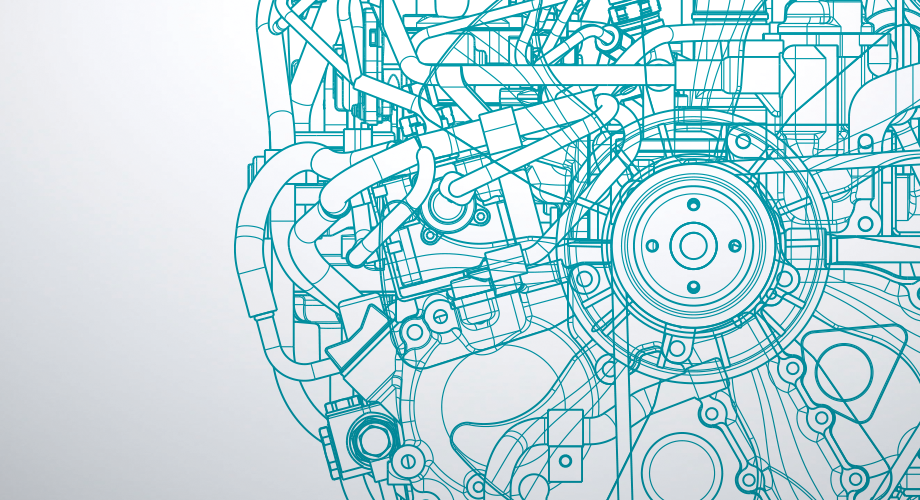When the Kubota engine is in operation, the fuel burns inside the cylinder and generates exhaust gas that is discharged from the engine. When the engine is operating normally and the fuel is completely burned, the exhaust gas mainly contains water vapor (H2O), carbon dioxide (CO2), and nitrogen (N2), and the exhaust gas is generally light gray. When the fuel is not completely burned or the engine is not working properly, harmful substances such as hydrocarbons (HC), carbon monoxide (CO), nitrogen oxides (NOx), and carbon particles will still exist in the exhaust gas, making the color of the exhaust gas appear white, black, or blue. It can be seen that the color of the engine exhaust can reflect the fuel combustion status and engine technical status. Therefore, Kubota excavator drivers or Kubota engine maintenance personnel can determine the technical status of the engine by the color of the engine exhaust.

1、 Exhaust emits black smoke
The black smoke in the exhaust is mainly carbon particles from incomplete fuel combustion. Therefore, excessive fuel supply in the fuel supply system, reduced air volume in the intake system, poor sealing of the combustion chamber composed of the cylinder block, cylinder head, and piston, and poor injection quality of the injectors can all cause incomplete fuel combustion, resulting in black smoke from the exhaust. The main reasons for black smoke emitted from exhaust are as follows:
1). Excessive fuel supply from high-pressure oil pump or uneven fuel supply from each cylinder
2). Poor valve sealing causes air leakage and low cylinder compression pressure
3). Air filter intake duct blockage, high intake resistance, resulting in insufficient intake air volume
4). Severe wear of cylinder liner, piston, and piston rings
5). Poor fuel injector operation
6). Engine overload operation
7). The advance angle of the fuel injection pump is too small, and it moves to the exhaust process after the combustion process
8). Control failure and malfunction of gasoline electronic injection system
For engines emitting black smoke, it can be checked and eliminated through high-pressure fuel pump calibration, injector injection test inspection, cylinder compression pressure measurement, intake duct cleaning, adjustment of fuel supply advance angle, and diagnosis of electronic injection system faults.

2、 Exhaust emits white smoke
The white smoke in the exhaust is mainly composed of fuel particles or water vapor that have not been fully atomized and burned. Therefore, any situation that prevents fuel atomization or water from entering the cylinder will cause the exhaust to emit white smoke. The main reasons for induction are as follows:
1). The temperature is low and the cylinder pressure is insufficient, resulting in poor fuel atomization, especially during the initial cold start when white smoke is emitted from the exhaust
2). Damaged cylinder gasket, cooling water seeping into the cylinder
3). Cylinder cracking, cooling water seeping into the cylinder
4). High water content in fuel, etc
When the exhaust emits white smoke during cold start, and the white smoke disappears after the engine warms up, it should be considered normal. If the vehicle still emits white smoke during normal operation, it is a fault. It should be checked and analyzed by observing whether the cooling water in the water tank is abnormally consumed, whether each cylinder is working properly, and whether the oil-water separator has too much water to eliminate the fault area.

3、 Exhaust emits blue smoke
The blue smoke in the exhaust is mainly the result of excessive oil entering the combustion chamber and participating in combustion. Therefore, any cause that causes oil to enter the combustion chamber will cause blue smoke from the exhaust. The main reasons for induction are as follows:
1). Broken piston ring
2). The oil return hole on the oil ring is blocked by carbon deposits, losing its scraping effect
3). The opening of the piston ring turns together, causing oil to flow from the opening of the piston ring
4). The piston ring is severely worn or stuck in the groove due to carbon deposits, losing its sealing effect
5). Install the air ring upside down and scrape the oil into the cylinder to burn it off
6). Insufficient piston ring elasticity and unqualified quality
7). Improper assembly or aging failure of valve guide oil seal, loss of sealing effect
8). Severe wear of pistons and cylinder barrels
9). Excessive oil addition causes excessive splashing of oil, and the oil ring cannot scrape off excess oil from the cylinder wall in time
The blue smoke emitted from the exhaust inevitably accompanies an increase in oil consumption, and some drivers refer to it as "burning oil". The oil and fuel consumption ratio is generally 0.5% to 0.8%. When the oil consumption exceeds this value, blue smoke will be generated in the exhaust. The fault of blue smoke emitted by the engine generally requires disassembly and inspection of the engine to identify the cause and determine the solution to eliminate the problem.



